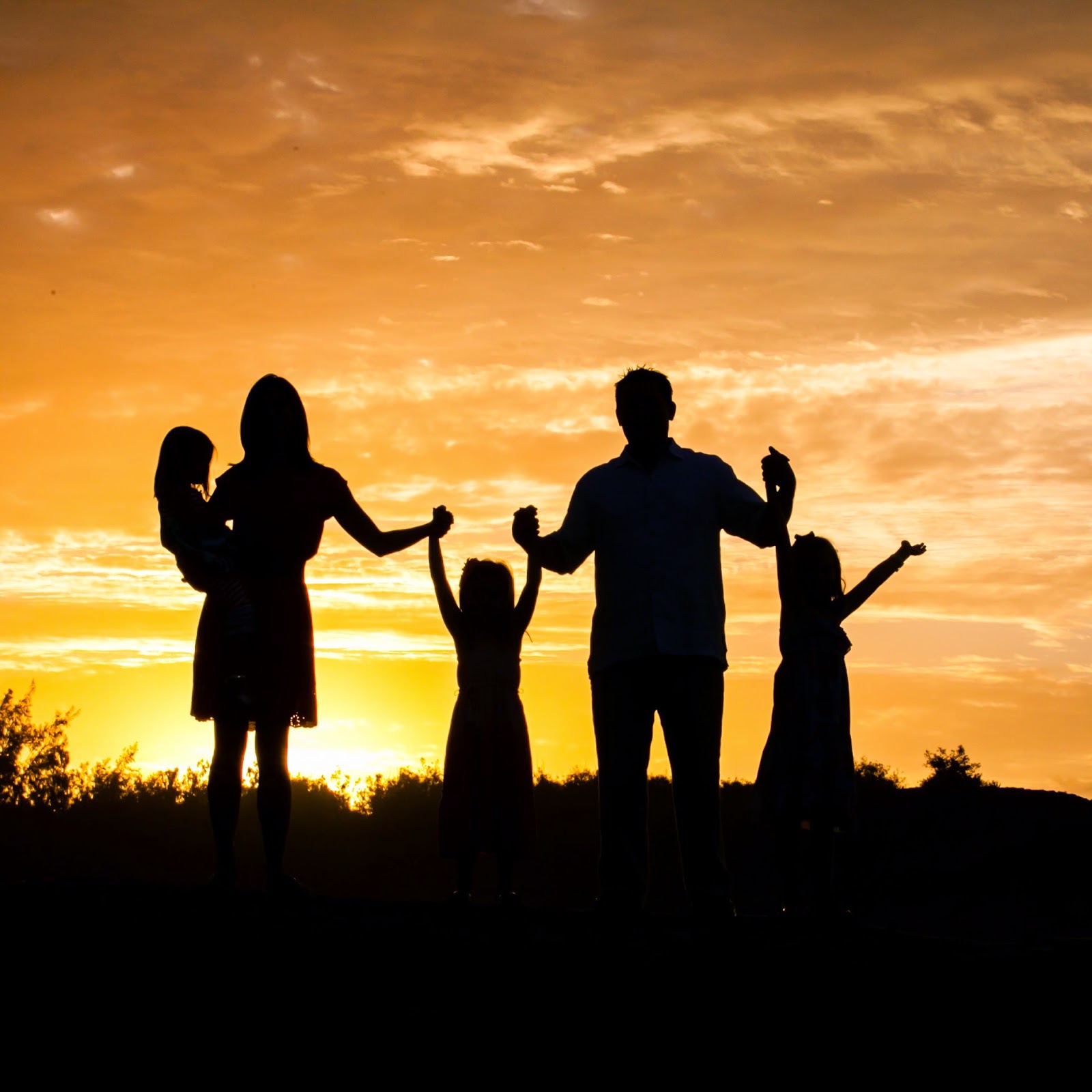importance of the Family
It is very likely that when we think of the idea of family, the following image will come to mind: a married man and a woman, and one or more children. While this is the most widespread and traditional model, there are multiple family structures that are increasingly accepted. Regardless of the structure of each, they all have elements in common. The dynamic has changed and today one finds same-sex couples setting the parameters of a family, thanks to an endless struggle for equal rights and possibilities. Marriage between two men or women, and the opportunity for adoption are realities in several countries, a trend that is gradually expanding. On the other hand, the bonds of the heart can be as strong or more than those of blood, because what moves and pushes people revolves around love.
There are different types of family: nuclear, homoparental, childless, single-parent, reconstituted, extensive, adoptive, grandparents and foster families. Below we explain its features in detail. The characteristics of current families in Mexico, Spain, Colombia, Argentina or other Latin American countries are very different from those of forty or fifty years ago, just as the families of that era were very different from those of forty others fifty years ago.
What is a family?

There are many family definitions raised by scholars in the field. Take Palacios y Rodrigo (1998) as an example: "The family is a union of people who share a vital project of life that is desired to be lasting, in which strong feelings of belonging to that group are generated, there is a personal commitment among its members and intense relationships are established privacy, reciprocity and dependence." The funny thing is that although they come from different disciplines and appreciate variations between them, they all have in common that include the following elements:
The members of the group: an adult male, an adult woman, a heterosexual or homosexual couple, the couple's children, etc.
The links between the members: biological, legal, affective...
If we look at the definition given as an example, the composition or structure of the family is not as relevant as the functions it fulfills and the relationships established in it.
What are the different types of family that exist?
At present, a lot of diversity can be found in terms of family models. The different family types can be classified into:

Nuclear families

Nuclear families
Nuclear families are made up of a pair of adults who take care of one or more biological children. It's therefore the classic family. Its main functions are the raising of children and achieving the socio-affective well-being of its members. In fact, there is research that says married men are more congratulating than single men. However, it is not clear whether this is a correlation or a cause. I mean, it could be that men who are happier get married precisely because that helps them find a partner. The nuclear family is the traditional concept of family. When talking about "family" in popular language, people refer to this type, although the term is increasingly spreading.
Homoparental families
They are families made up of two gay parents and one or more children. Until recently, when it was a couple of adults, especially in these subjects, it was assumed that they were only heterosexual couples. The existing rejection of this family modality, predominant in certain social sectors, is part of the still-existing beliefs about homosexual people and the entrenched beliefs about gender roles in motherhood and fatherhood. And this is demonstrated by the most frequent social prejudices that have been heard towards these types of families, as they are, in general: •"Gays and lesbians are insane, unstable, unable to raise family and lack parental skills." •"These families live in isolation, in ghettos made up only of homosexuals, without social support networks." •"These children show a psychological development altered by lacking the necessary male and female references." •"These children are going to have a lot of problems because they will suffer social rejection." •"Those kids are going to end up being gay too." •"In that environment, these children can be sexually abused." These biases still persist despite numerous research and studies conducted by major institutions such as the American Psychological Association (APA) or the American Academy of Pediatrics (AAP). These show that children with same-sex parents lead a very standardized life and that this does not negatively influence their development. What's more, there's even data to the contrary. Children of gay couples have better mental health, more self-esteem and more flexible gender roles. This is because it is often a very thoughtful motherhood and paternity, which leads them to research on child development, fostering appropriate educational styles and a family environment in which children feel loved and protected, while encouraging autonomy and independence
Single-parent families
This form of family is also not freed from criticism and speculation, both in the case of single women and men, although the latter remain in the minority. A few years ago, when it was about single-parent families, the most common profile was that of the divorced mother who had to take care of the children alone because the father had been misunderstood. Adolescent girls who had become pregnant and, again, the biological father had become ununderstood. Today that profile has changed a little bit. While it is true that divorced mothers continue to abound, there has been a considerable increase in women who have decided to become single mothers in recent years through assisted reproductive methods. Likewise, more and more parents who after the divorce decide to keep custody of their children, thus claiming their right to exercise paternity on an equal footing with women. As with homoparental families, the single-parent family type has their corresponding cultural beliefs and prejudices regarding mostly gender roles. For example: •"A man alone is not able to raise his child." •"Children are better off with their mothers." •"These children show a psychological development altered by lacking a father/mother figure." In the case of women who decide to be mothers alone or end up being mothers alone because they have no choice, they do not question both their ability as a mother as the effect that the absence of a father figure will have on the younger ones. However, when it comes to single parents, doubts about the proper development of minors are raised, based mainly on arguments that question men's ability and ability to be parents. In fact, it is normal for divorced parents to encounter legal and child-friendly barriers, making it quite difficult for them to gain exclusive custody and sometimes even sharing. All this is somewhat contradictory for a society that seeks to achieve equal rights and roles between men and women. On the other hand, studies on the development of children in single-parent families conclude that they are children who grow up as "normal" as any other.
Reconstituted, assembled or composed families
This family modality is perhaps the most abundant today due to the large number of divorces that occur. They are formed for example by the father's biological children and the biological children of the mother. They are therefore stepbrothers who form a family because their parents have joined after separating from their previous partners.
Family functions
Just as varied definitions of family concept have been proposed, there are different perceptions as to their functions. Referring to one of them, Allard (1976) argues that the ones that every family must fulfill are those of meeting the needs of having, relationship and being.
Needs to have: these are the economic, material and educational goods necessary to live.
Relationship needs: they refer to socialization, to love and to feel loved and accepted by others, to communication
Needs to be: they are but the sense of identity and autonomy of oneself.
Although all these functions are important, literature places more emphasis on the relevance of the family as an instrument of socialization. Socialization is the process by which beliefs, values and behaviors that a society considers significant are acquired. It is the means by which the behavior of children is regulated and their impulses are controlled, helps the personal growth of the individual and perpetuates the social order. Thus, the family environment is the first that the little ones can access to relate and learn these things, so it is important that the family is able to meet this basic need for the good development of its members.
References
Alberdi, I. (1999). The new Spanish family. Madrid: Taurus. 2.Arranz, E. and Oliva, A. (2010), Psychological development in the new family structures. Madrid: Pyramid. 3.Bauserman, R. (2002). Child adjustment in joint-custody versus sole-custody arrangements: A meta-analytic review. Journal of Family Psychology, 16, (1), 91-102. 4.Borrás, V. (2014). Families too. Family diversity, homoparental families. Barcelona: Ed. Bellaterra. 5.Bos, H. (2013). Lesbian-mother families formed through donor insemination. In A. Goldberg & K. R. Allen (Eds.), LGBT-Parent Families: Innovations in Research and Implications for Practice (pp. 21–37). New York: Springer. 6.Boyd, H. (2000). New Families. Barcelona: Ocean. 7.Canton, J.; Arboleda, M.R. and Justicia, M.D. (2002). Marriage disputes, divorce and child development. Madrid: Pyramid. 8.Coleman, M. and Ganong, L.H. (2004) Handbook of contemporary families. Considering the past, contemplating the future. (pp. 3-22). Thousand Oaks: Sage Publications. 9.Demo, D.H.; Allen, K.R. and Fine, M.A. (2000). Handbook of family diversity. New York: Oxford University Press. 10.Fernández, J.A. and Tobío, C. (1999). Single-parent families in Spain. Madrid: Ministry of Labour and Social Affairs. 11.Flaquer, L. (1999) The waning star of the father. Barcelona: Ariel. 12.Flaquer, L., Almeda, E. and Navarro-Varas, S. (2006). Single parenthood and childhood. Barcelona: La Caixa Foundation. 13.Golberg, A.E. (2010). Lesbian and gay parents and their children. Research on the Family Life Cycle. Washington: American Psychological Assocition. 14.Goldberg, A. E. & Allen, K.R. (2013.), LGBT-Parent Families: Innovations in Research and Implications for Practice . New York: Springer. 15.Golombok, S. (2000). Parenting. What really counts? London: Routledge. (Trad. Cast. Family models. What really matters? Barcelona: Graó, 2006). 16.González, M-M.; Say, M.; Lopez, F.; Martinez, E. and Morgado, B. (2013). Family Diversity and family reconciliation strategies in Andalusia. Seville: Andalusian Institute of Women. 17.González, M-M.; Say, M.; Lopez, F.; Martinez, E. and Morgado, B. (2013). Family diversity and reconciliation strategies. A comparative study. DIVERSIA Final Report. Seville: Andalusian Institute of Women. 18.González, M.-M (2004). Grow in homoparental families. A controversial reality. Learning, 27, (3), 361-373. 19.González, M.-M. (2000). Single parenthood and social exclusion in Spain. Seville: Seville City Council.